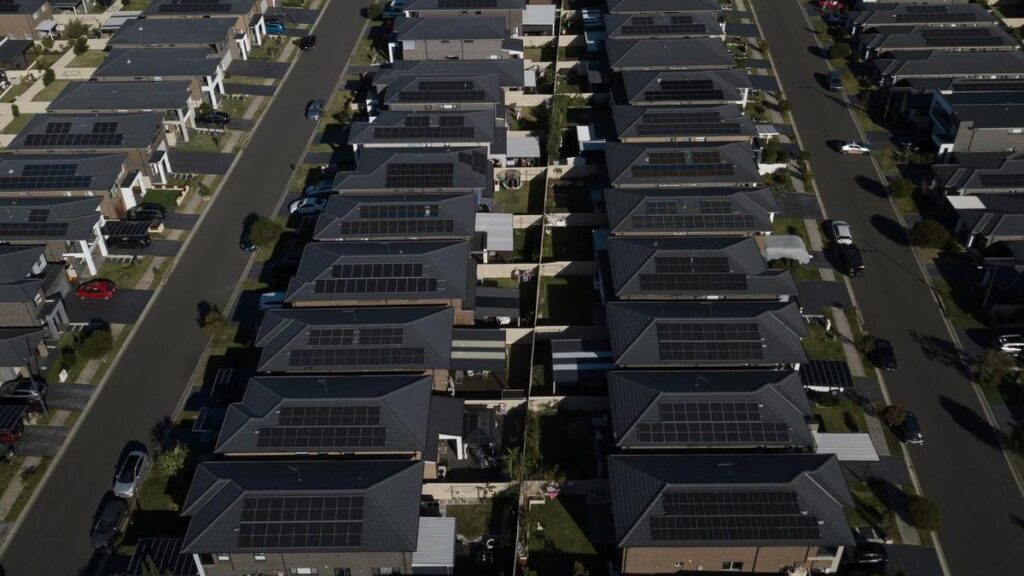
URGENT UPDATE: Australians are experiencing significant savings on energy bills thanks to the rapid adoption of rooftop solar and batteries. However, the Australian Energy Regulator warns that improved coordination with the energy grid is crucial to prevent unexpected bill shocks for consumers.
The latest findings from the 2025 State of the Energy Market Report reveal that rooftop solar contributed an impressive 14.7% of Australia’s total electricity generation in the first quarter of 2025, outpacing wind energy at 13.7% and large-scale solar at 9.3%. Households are increasingly integrating battery systems with their solar panels, allowing them to store energy for nighttime use. This trend is bolstered by federal subsidies that make installations more accessible.
The report highlights the potential for these “consumer energy resources” to significantly lower energy costs for households that invest in them. However, the regulator emphasizes that the overall benefits for consumers hinge on effective orchestration of these resources. “The broader system and economic benefits for all consumers will depend on the extent to which consumer energy resources can be orchestrated,” the report states.
Innovative solutions like virtual power plants and vehicle-to-grid technology are essential for managing peak energy demand, which can help reduce the need for costly infrastructure investments in large-scale solar and wind energy, as well as transmission networks. The regulator insists that projected savings on network costs are not guaranteed and depend on appropriate policy frameworks, market incentives, and consumer trust.
In addition to the rise of household energy solutions, the transition to large-scale renewable energy sources is making strides toward climate targets. Clare Savage, chair of the Australian Energy Regulator, identified 2024 as a pivotal year for shifting away from coal dependency. By the end of this year, renewable technologies—including rooftop solar, solar farms, wind, hydro, and batteries—are expected to constitute 60% of the National Electricity Market’s generation capacity, contributing 39% of the total generation output. This marks a significant shift over the past decade.
However, the rollout of large renewable projects faces challenges. Lengthy planning processes, environmental approvals, and social license hurdles are causing delays in the infrastructure needed to transport renewable energy across the country.
As energy costs rise and the demand for sustainable solutions grows, the need for coordinated efforts between households and the energy grid is more critical than ever. The ongoing developments in Australia’s energy landscape are set to shape the financial future of millions of consumers.
Stay tuned for updates on how these changes will impact your energy bills and the broader Australian economy.





